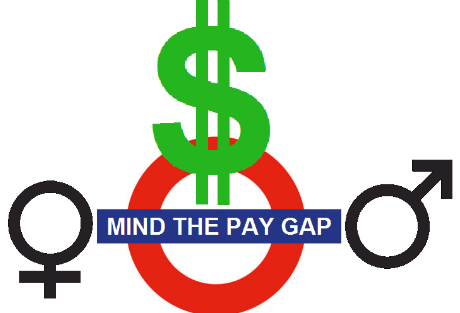Commercial Insights

In light of the recent government initiative to reveal the gender pay gap figures for companies around the UK, it seems a good time to examine the latest revelations that have provoked such a measure, and the reactions to this latest attempt to solve an ongoing issue.
The original plan, to publish the league tables in order to ‘out’ the worst offenders, is a sensible one, especially given recent findings from the Glassdoor Gender Pay Gap Survey.
That survey revealed that 89% of adults believe that men and women should be paid equally for their work, and that three in five people would not apply to a job where this was not the case.
As such, making any company with more than 250 employees publish their salary and bonus figures for both men and women should allow people to make up their own minds about what companies they would and wouldn’t like to work for, and businesses with poor figures, rated poorly in the ‘league tables’ will discourage potential applicants simply by being there.
Ann Francke, the Chartered Management Institute’s chief executive, corroborated this, stating that “shining a light on what men and women are paid at every level, as well as monitoring the percentage of women at every level, is proven to speed up progress.”
This should, by all means, incentivise those companies to make changes to their gender inequalities and thus, begin to close the gap in a big way. Earlier in the month, however, Cameron announced that the figures would not be revealed until 2018 at the earliest.
This has been met with outrage from a number of sources, partly because it allows firms to ‘sort out’ their inequalities before they are made public knowledge, rather than showing the current status of the system.
Labour MP Dan Jarvis made the point that women would have had to work effectively for free for more than four months before 2018. “This is a completely unacceptable delay 45 years after the introduction of the Equal Pay Act,” he said to the Guardian.
Trade Union Congress general secretary Frances O’Grady agreed with him, although she did concede that Cameron’s initiative is a step in the right direction. “We’re disappointed that firms won’t have to publish their gender pay gap figures until 2018.
“There is no need for such a long delay,” she said, adding that it’s “a real shame that bosses won’t be made to explain why pay gaps exist in their workplaces and what action they will take to narrow them.”
At the current rate of progress, it would take close to fifty years to narrow the pay gap to negligible levels. What the league table data will do, for sure, is speed this up, as no company is going want to be named as one of the worst offenders.
Nicky Morgan, minister for equality and education, called on women to demand more themselves in the battle for equality, claiming that whilst huge strides had been made in recent years to attempt to close the gap between genders, more needed to be done at grassroots level to speed up the rate of change.
“I’m calling on women across Britain to use their position as employees and consumers to demand more from businesses” she said, “ensuring their talents are given the recognition and reward they deserve.”
In America, President Obama has released a similar initiative, with the only change being that the US Ruling will apply to any company with over 100 employees will have to publish their data. In America, the data will be published from next year.
“The goal is to help businesses that are trying to do the right thing...to get a clearer picture of how they can ensure their employees are being treated equally,” Obama said when he announced the initiative. “A better picture of the data will also help us do a better job enforcing existing equal pay laws.”
The most obvious current gender pay gap topic is the Met Office strike, where staff have begun a walkout over the fact that there is a 10% pay gap between male and female salaries. The Met Office has stated that it is aware of the pay gap and is “committed to reducing it,” but this is the second walkout in less than a year.
Many members of the trade union Prospect, which represents a majority of the workers at the Met Office, travelled to London to lobby MPs outside Parliament, claiming that the government’s current pay policy at the Met Office was restricting their ability to close the pay gap.
Helen Stevens, spokeswoman for the Union, stated that industrial action was not taken lightly by staff, who were all loyal and committed to the Met Office cause, but they were being let down by a government which "talks the talk on fair and equal pay, but does not walk the walk".
It’s not the first walkout regarding the pay gap, and it probably won’t be the last. With these new measures coming in, there are assurances from the government that things are going to change for the better, but as ever, substantial change will take time, and criticism of the initiative will be bolstered if things don’t change for the better in an obvious manner, reasonably quickly.
Cameron will be watching Obama’s initiative with a keen eye, and hoping that his league tables will end in promotion, not relegation.
Academy tools to help you get a job
-

Free Watson Glaser Practice Test
Understand the test format, compare your performance with others, and boost your critical thinking skills.

